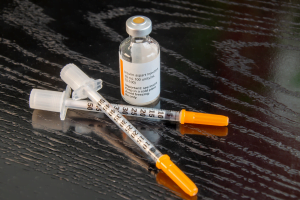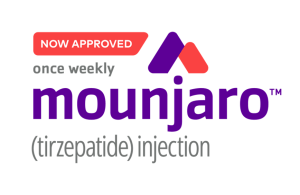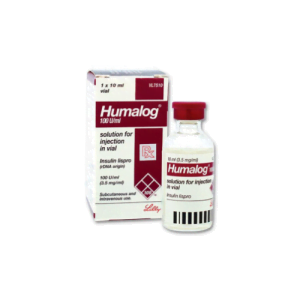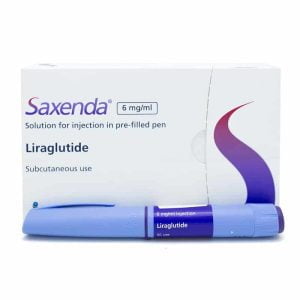While managing blood sugar control is a primary focus in diabetes management, it is also essential to recognize the impact of diabetes on other body systems. One lesser-known but critically important aspect is the connection between diabetes and respiratory complications. Researchers are uncovering the complex interplay between these two conditions, shedding light on various common respiratory complications that can affect individuals with diabetes.
The Bidirectional Interaction
The relationship between diabetes and respiratory health is bidirectional. Each condition can influence and worsen the other.
Impaired Lung Function
One significant outcome of diabetes is elevated blood sugar levels, which can harm blood vessels and nerves, including those within the lungs. This damage can impair the functioning of these vessels and nerves in the respiratory system. As a result, individuals with diabetes may experience challenges in breathing effectively and maintaining healthy oxygen levels in their bloodstream.
Co-Occurring Health Issues
Diabetes often co-occurs with other health issues, such as obesity and metabolic disturbances. Obesity, for example, can put additional stress on the respiratory system. Excess weight in the abdominal area can compress the diaphragm and chest, making it harder for the lungs to expand fully during inhalation. This can lead to shallow breathing and decreased lung efficiency. Metabolic disturbances associated with diabetes can also indirectly affect the respiratory system, contributing to inflammation and oxidative stress, further exacerbating respiratory complications.
Common Respiratory Complications Associated with Diabetes
These respiratory problems associated with diabetes vary in nature and severity, and understanding their symptoms is crucial for early identification and effective management.
Diabetic Ketoacidosis (DKA)
Diabetic ketoacidosis (DKA) is a severe complication of diabetes. While it is not a direct respiratory condition, it can lead to a distinctive breathing pattern known as Kussmaul breathing in severe cases. Kussmaul breathing is characterized by rapid and deep breaths as the body compensates for the metabolic imbalance caused by DKA. Symptoms of DKA include extreme thirst, frequent urination, high blood sugar levels, fruity-smelling breath, nausea, vomiting, abdominal pain, and confusion.
If left untreated, DKA can progress to a diabetic coma and affect overall health, including respiratory function. Prompt treatment is essential to prevent these potential effects on respiratory health. Treatment typically involves administering intravenous fluids to rehydrate the body. It lowers blood sugar, stops ketone buildup, and addresses underlying causes such as infections or missed insulin doses.
Diabetic Lung Disease
Diabetic lung disease encompasses conditions such as chronic obstructive pulmonary disease (COPD) and interstitial lung disease, which are often observed more frequently in people with diabetes. COPD may lead to symptoms such as breathlessness, persistent cough, and increased mucus production, making everyday tasks more difficult. Interstitial lung disease, another form of diabetic lung disease, causes inflammation and scarring, leading to breathlessness and impairments in oxygen exchange.
Respiratory Infections
People with diabetes are more vulnerable to respiratory infections because diabetes weakens their immune system. These infections can range from mild (like sinusitis) to severe (such as pneumonia or bronchitis). Symptoms include cough, fever, chest discomfort, shortness of breath, and feeling unwell. These infections can affect blood sugar levels and cause complications if left untreated. To reduce the risk, individuals with diabetes should get vaccinated, practice infection prevention, and seek prompt medical care.
Practical strategies for managing these complications include:
- Practicing good hygiene.
- Staying up-to-date on recommended vaccinations.
- Seeking medical attention promptly if symptoms of a respiratory infection arise.
Sleep Apnea
Sleep apnea, characterized by intermittent pauses and restarts in breathing during sleep, commonly affects individuals with diabetes. There are two primary types of sleep apnea: obstructive sleep apnea (OSA) and central sleep apnea (CSA). Blockage in the airway causes OSA, while CSA results from a brain control issue in breathing. Sleep apnea symptoms include loud snoring, sudden awakenings with choking or gasping, daytime sleepiness, trouble concentrating, and morning.
Sleep apnea can lead to various complications, including heart problems and worsened blood sugar control. Treatment often involves lifestyle modifications such as weight loss and devices like continuous positive airway pressure (CPAP) machines to keep the airway open during sleep. Individuals with diabetes need to be aware of the symptoms of sleep apnea.
Prevention and Management Strategies
Living with diabetes while safeguarding respiratory health requires a multifaceted approach. Here are a few handy tips.
Lifestyle Modifications (Diet, Exercise)
Lifestyle plays a pivotal role in managing diabetes and respiratory health. A conscious diet and regular exercise can stabilize blood sugar levels and minimize the risk of respiratory complications.
Medications and Insulin Management
Medications and insulin are essential components of diabetes management. It is necessary to follow your prescription to control diabetes and mitigate related respiratory issues. These treatments assist in regulating blood sugar levels, reducing complications, and maintaining optimal health.
Monitoring Blood Sugar Levels
Regularly monitoring blood sugar levels is a fundamental practice for people with diabetes. It empowers them to gain better control over their condition and enables early identification of potential complications. This proactive approach allows for timely adjustments to the treatment plan, promoting stability and well-being.
Managing Other Risk Factors (Smoking, Obesity)
Addressing other risk factors is equally crucial. Smoking cessation, reducing alcohol, and managing weight are significant contributors to reducing the risk of respiratory complications in diabetes.
Vaccination for Respiratory Infections
Keeping up-to-date on vaccinations can prevent respiratory infections. Vaccinations can fortify our immune defenses, reduce the risk of respiratory complications, and support comprehensive diabetes care.
By understanding the potential respiratory complications associated with diabetes, individuals with diabetes and their healthcare providers can take proactive measures to manage and address these issues, ultimately improving overall health and well-being.
How does diabetes affect the respiratory system?
Diabetes can impact the respiratory system in several ways. High blood sugar levels can weaken the immune system, making individuals more susceptible to respiratory infections like pneumonia and bronchitis. Moreover, diabetes can lead to complications such as diabetic ketoacidosis (DKA) or hyperglycemic hyperosmolar state (HHS), which, if severe, can affect breathing patterns and potentially lead to difficulty breathing or respiratory distress. Additionally, poorly managed diabetes may contribute to decreased lung function over time, affecting respiratory health. Proper blood sugar control and overall diabetes management are crucial to mitigate these risks and maintain optimal respiratory function.














